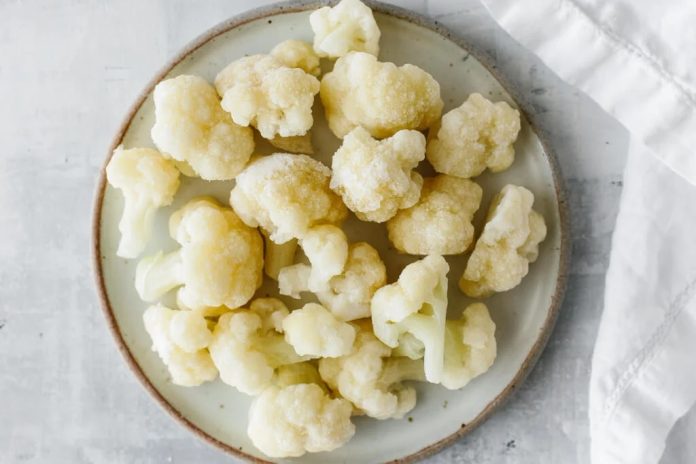Cauliflower is a versatile and nutritious vegetable that can enhance various dishes, from stir-fries and casseroles to salads and soups. Freezing cauliflower is a great way to preserve its freshness and nutritional value, allowing you to enjoy this vegetable throughout the year. In this article, we will explore the best methods for freezing cauliflower, including preparation, blanching, packaging, and storage tips.
Why Freeze Cauliflower?
Freezing cauliflower has several benefits:
- Preservation of Nutrients: Freezing helps retain the vitamins and minerals in cauliflower, such as vitamin C, vitamin K, and dietary fiber. This makes it a healthy option to include in your meals later.
- Convenience: Having frozen cauliflower on hand allows for quick and easy meal preparation. You can add it to dishes straight from the freezer without needing to wash or chop fresh cauliflower.
- Waste Reduction: Freezing is an excellent way to prevent waste if you have leftover cauliflower that you cannot use before it spoils.
Choosing the Right Cauliflower
When selecting cauliflower for freezing, choose fresh, firm heads with tightly packed florets. Avoid any that show signs of yellowing, wilting, or browning. Smaller heads are generally more tender and flavorful, while larger heads may have tougher stems.
How to Prepare Cauliflower for Freezing
Preparing cauliflower for freezing involves a few essential steps:
1. Clean the Cauliflower
Start by rinsing the cauliflower under cool running water to remove any dirt or debris. Make sure to inspect for any insects hiding in the florets.
2. Cut the Cauliflower
After washing, use a sharp knife to cut the cauliflower into uniform florets. This ensures even freezing and quicker thawing later. You can also cut the cauliflower into larger pieces or even slice it if you prefer. The key is to keep the pieces roughly the same size for consistent cooking.
3. Blanching
Blanching is a crucial step that helps preserve the color, flavor, and nutritional value of the cauliflower. It also helps to deactivate enzymes that can cause spoilage. Here’s how to blanch cauliflower:
- Boil Water: Fill a large pot with water and bring it to a rolling boil. You can add a pinch of salt to the water, which can enhance the flavor of the cauliflower.
- Prepare an Ice Bath: While waiting for the water to boil, fill a large bowl with ice and cold water. This will be used to stop the cooking process after blanching.
- Blanch the Cauliflower: Carefully add the cauliflower florets to the boiling water. Blanch for 3 to 5 minutes, depending on the size of the florets. Smaller florets will need closer to 3 minutes, while larger ones may require 5 minutes.
- Shock the Cauliflower: Using a slotted spoon, quickly transfer the blanched cauliflower to the ice bath to stop the cooking process. Let it sit in the ice water for the same amount of time it was blanched.
4. Drain and Dry
After shocking the cauliflower, drain it well and pat it dry with a clean kitchen towel or paper towels. This step is important to prevent ice crystals from forming during freezing.
Freezing Cauliflower
Once the cauliflower is prepped, it’s time to freeze it:
1. Packaging Options
You can freeze cauliflower in several ways, depending on your preference:
- Freezer Bags: Use resealable freezer bags for easy storage. Squeeze out as much air as possible before sealing to prevent freezer burn.
- Containers: Use airtight containers designed for freezing. Make sure to leave some space at the top, as liquids expand when frozen.
- Vacuum Sealing: If you have a vacuum sealer, this is an excellent method for freezing cauliflower, as it removes all air and helps preserve quality.
2. Portioning
Consider freezing cauliflower in portions that you would typically use for a recipe. This way, you can easily grab the amount you need without having to thaw the entire batch.
3. Labeling
Don’t forget to label your packages or containers with the date and contents. This will help you keep track of how long your cauliflower has been in the freezer.
Storage Tips
- Freezing Duration: Frozen cauliflower can maintain its best quality for about 10 to 12 months. After that, it may lose flavor and texture but will still be safe to eat.
- Freezer Temperature: Ensure your freezer is set to 0°F (-18°C) or lower to keep the cauliflower fresh and prevent spoilage.
- Avoid Refreezing: Try to avoid thawing and refreezing cauliflower, as this can negatively impact its texture and flavor. Instead, take out only the amount you need.
How to Use Frozen Cauliflower
Frozen cauliflower can be used directly in recipes without thawing. Here are some ideas on how to incorporate frozen cauliflower into your meals:
- Stir-Fries: Toss frozen cauliflower into stir-fries for added nutrition and color.
- Soups and Stews: Add frozen cauliflower to soups and stews for a hearty and healthy boost.
- Casseroles: Mix frozen cauliflower into casseroles before baking for a creamy and nutritious dish.
- Purees: Blend frozen cauliflower into smoothies or make a cauliflower mash as a low-carb alternative to mashed potatoes.
- Roasting: Spread frozen cauliflower on a baking sheet, drizzle with olive oil, and roast directly from the freezer for a delicious side dish.
Freezing cauliflower is a simple and effective way to preserve its freshness and nutritional value, allowing you to enjoy this versatile vegetable year-round. By following the steps outlined above, including proper cleaning, blanching, and packaging, you can ensure that your frozen cauliflower remains flavorful and nutritious. With the convenience of frozen cauliflower, you can easily incorporate it into a variety of dishes, making it an excellent addition to any meal. So, stock up on cauliflower and freeze it for a healthy, hassle-free cooking experience!















